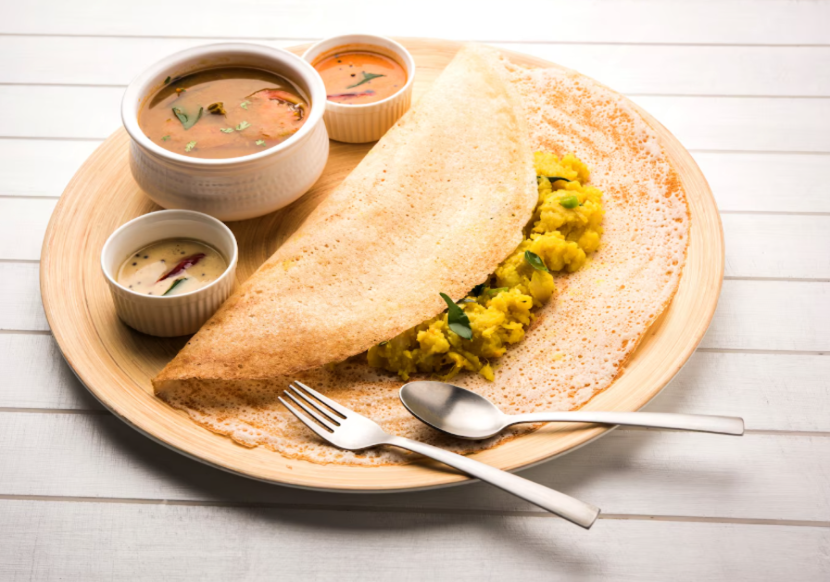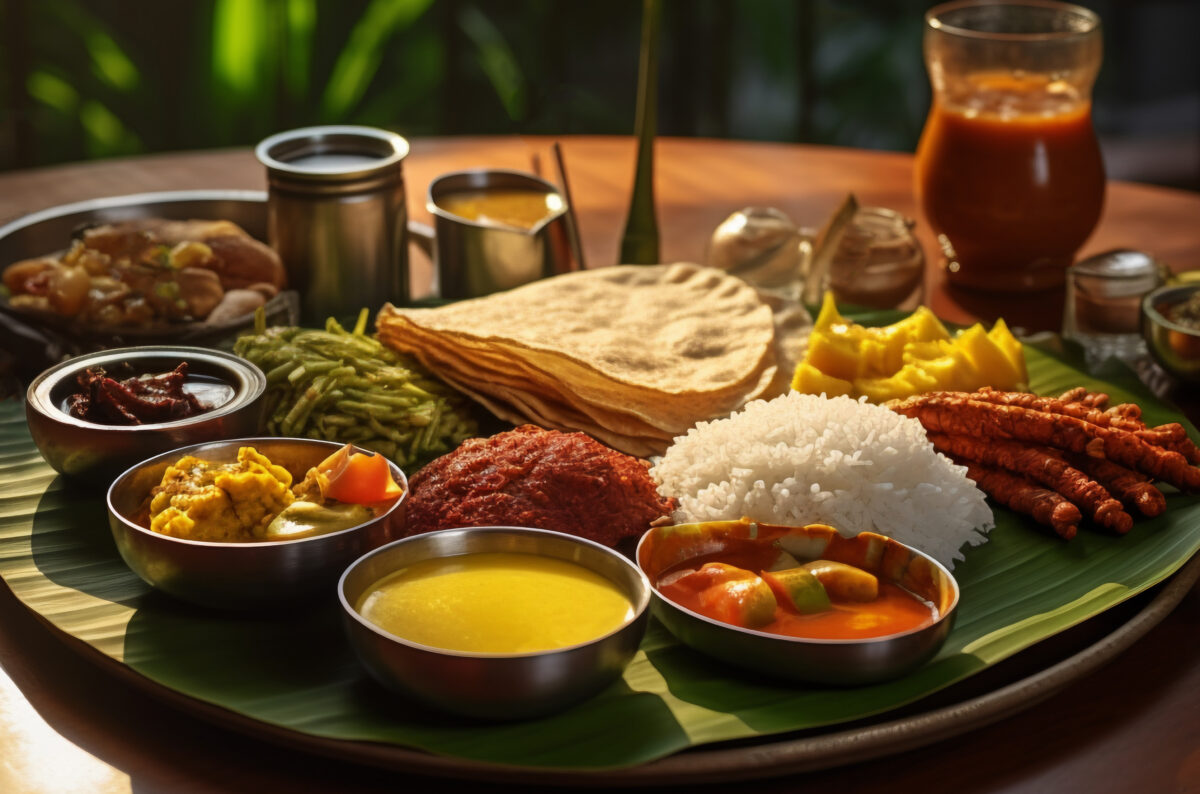
- June 3, 2025
Idli vs Dosa Batter – Understanding the Key Differences & Perfecting Your Recipe
When it comes to South Indian breakfast staples, the debate over idli vs dosa batter is a favorite topic among home cooks and food lovers alike. Both idli and dosa are made from fermented rice and urad dal batter, but subtle differences in preparation and consistency set these two dishes apart. Getting the batter right is crucial, as it directly affects the texture, taste, and overall experience of these iconic dishes.
If you’re in cities like Ahmedabad, Mumbai, or Delhi, you can enjoy perfectly made dosas and idlis at your nearest Mysore Aduge outlet.
In this article, we’ll explore the idli vs dosa batter differences, discuss the ideal ingredient ratios, explain the importance of fermentation, and share expert tips on how to make idli vs dosa batter at home. We’ll also dive into the crucial aspect of the consistency of idli and dosa batter, helping you achieve soft, fluffy idlis and crispy dosas every time.
What Goes Into the Batter? Understanding Core Ingredients
At the heart of every South Indian breakfast is the perfect batter, and when comparing idli vs dosa batter, it’s important to understand what ingredients go in and why.
- The primary ingredients for both batters are rice and urad dal (black gram lentils). Rice provides the structure, while urad dal gives the batter its fermenting power and lightness.
- Fenugreek seeds are often added in small quantities to both batters to enhance fermentation and add a subtle aroma.
- For idli batter, some people add poha (flattened rice) or cooked rice. These additions help achieve a softer texture and aid fermentation.
- Regional variations might include different rice types such as parboiled rice for idli or raw rice for dosa, and sometimes even millet varieties are used for a healthier twist.
Understanding these core ingredients is the foundation when you learn how to make idli vs dosa batter that will ferment properly and yield delicious results.
Idli Batter vs Dosa Batter – Key Differences Explained
The primary difference in idli vs dosa batter lies in the ingredient ratios, texture, and fermentation process. Here’s a detailed look at these differences:
- Ingredient Ratios:
- For idli batter, the typical ratio of urad dal to rice is roughly 1:2 or sometimes 1:3, with a thicker consistency.
- For dosa batter, the rice quantity is usually higher, often with a 1:3 or even 1:4 ratio, making it thinner and more fluid.
- For idli batter, the typical ratio of urad dal to rice is roughly 1:2 or sometimes 1:3, with a thicker consistency.
- Soaking and Grinding:
- Both urad dal and rice are soaked separately for several hours. For idli, the urad dal is ground very finely and aerated to make the batter fluffy.
- For dosa, grinding may be slightly coarser, and the batter tends to be thinner for easy spreading on the pan.
- Both urad dal and rice are soaked separately for several hours. For idli, the urad dal is ground very finely and aerated to make the batter fluffy.
You can also learn more about these techniques through our blog on traditional South Indian food.
- Fermentation Goals:
- Both batters ferment until they roughly double in volume, but idli batter requires a fluffier, airier texture, while dosa batter’s fermentation also develops a slight tanginess to enhance flavor.
- Both batters ferment until they roughly double in volume, but idli batter requires a fluffier, airier texture, while dosa batter’s fermentation also develops a slight tanginess to enhance flavor.
- Salt Addition:
- In idli batter, salt is traditionally added after fermentation to avoid slowing down the process.
- In dosa batter, salt can be added before or after fermentation depending on family recipes and preference.
- In idli batter, salt is traditionally added after fermentation to avoid slowing down the process.
If you’re planning to start a food venture, understanding these subtle differences is key to running a successful dosa franchise in India.
The Role of Consistency in Batter Performance
A crucial part of understanding idli vs dosa batter is mastering the consistency of idli and dosa batter. This directly impacts how the batter behaves during cooking.
- Idli batter consistency should be thick and spoonable. When you scoop it, it should fall slowly and hold shape somewhat, thick enough to be steamed into soft, fluffy cakes.
- Dosa batter consistency needs to be thinner and pourable, almost like pancake batter, to spread thinly and cook into crisp, golden dosas.
To test the consistency: scoop some batter and pour it back into the bowl. Idli batter should fall in a thick stream without running off quickly, whereas dosa batter should flow easily and spread.
Avoid these common mistakes:
- Making dosa batter too thick, which causes thick, chewy dosas.
- Making idli batter too thin, resulting in dense and heavy idlis.
Mastering the consistency of idli and dosa batter is a key step toward perfecting your South Indian breakfast dishes.
Tips to Perfect Each Batter Type
To achieve the ideal idli vs dosa batter, keep these expert tips in mind:
- Fermentation Troubleshooting:
- Fermentation depends on temperature. In cold climates, keep the batter in a warm spot like an oven with the light on or near a stove.
- Use fresh urad dal and clean water for better results.
- Fermentation depends on temperature. In cold climates, keep the batter in a warm spot like an oven with the light on or near a stove.
- Equipment Matters:
- A traditional wet grinder is ideal for grinding rice and dal to the right smoothness and texture.
- While blenders can be used, they often require careful control over grinding time and water addition to prevent over-thinning or under-grinding.
- A traditional wet grinder is ideal for grinding rice and dal to the right smoothness and texture.
- Pro Tips:
- Use a cast iron tawa for dosa to get the best crispy texture.
- Use fermentation containers that allow airflow, such as wide-mouthed glass or ceramic bowls.
- Adding a pinch of baking soda right before cooking can be helpful if fermentation was weak, but traditionalists prefer natural fermentation.
- Use a cast iron tawa for dosa to get the best crispy texture.
Following these tips will ensure your idli vs dosa batter is always on point. Looking to bring authentic recipes to your region? Explore our food franchise opportunities in Maharashtra or franchise business in Mumbai.
Cooking with the Batter – From Steam to Sizzle
Once you’ve mastered the idli vs dosa batter, the next step is cooking.
- For soft idlis:
- Pour the thick batter into greased idli molds and steam for about 10-12 minutes.
- Avoid opening the lid during cooking and let the idlis rest a few minutes before removing to retain fluffiness.
- Pour the thick batter into greased idli molds and steam for about 10-12 minutes.
- For crispy dosas:
- Heat the tawa until hot and sprinkle a few drops of water to check sizzle.
- Pour the thin batter and spread in a circular motion quickly.
- Drizzle oil or ghee around the edges and cook until golden brown and crisp.
- Heat the tawa until hot and sprinkle a few drops of water to check sizzle.
Common issues include:
- Dense idlis caused by under-fermented or watery batter.
- Soggy dosas due to batter that’s too thick or insufficient heat on the tawa.
Mastering these cooking techniques completes the journey from batter to delicious South Indian breakfast.
Experience Authentic South Indian Cuisine at Mysore Aduge
Inspired to try making your own batter or simply craving expertly fermented idlis and dosas? Mysore Aduge brings the rich vegetarian culinary legacy of Mysore right to your plate. Visit us for authentic flavors or explore franchise opportunities and help spread the true taste of Mysore across India.
Explore Mysore Aduge – where every dish tells a story steeped in tradition.
Conclusion
The world of idli vs dosa batter is full of nuances that affect the texture, taste, and authenticity of your favorite South Indian dishes. By understanding the idli batter vs dosa batter difference, mastering the consistency of idli and dosa batter, and following expert tips, you can easily make restaurant-quality idlis and dosas at home. Whether you are a beginner or a seasoned cook, experimenting with your batter and fermentation process will lead you to perfect every batch.
Frequently Asked Questions
The main difference lies in the ratio of ingredients and consistency. Idli batter is thicker with a higher proportion of urad dal and fermented for fluffiness. Dosa batter is thinner with more rice and slightly coarser grind, designed to spread thin and crisp.
Yes, but adjustments are needed. A thicker batter is better for idlis, while dosa requires thinning with water for spreading. Using one batter for both can be convenient but may affect the texture.
Soak rice and urad dal separately for 4-6 hours, grind urad dal finely and rice slightly coarse, combine, and ferment the mixture in a warm place for 8-12 hours until it doubles in volume. Adjust consistency for idli or dosa before cooking.
Refrigerated batter stays good for 4-5 days. Use within this time for best taste and fermentation activity.
Yes, you can freeze batter for up to a month. Thaw fully and stir well before using.
Yes, both batters are naturally gluten-free, made from rice and urad dal.
Fermentation depends on temperature, freshness of ingredients, and cleanliness. Ensure warm conditions and use fresh dal and rice.
Salt is usually added after fermentation for idli batter, while dosa batter recipes may vary with salt added before or after fermenting.







